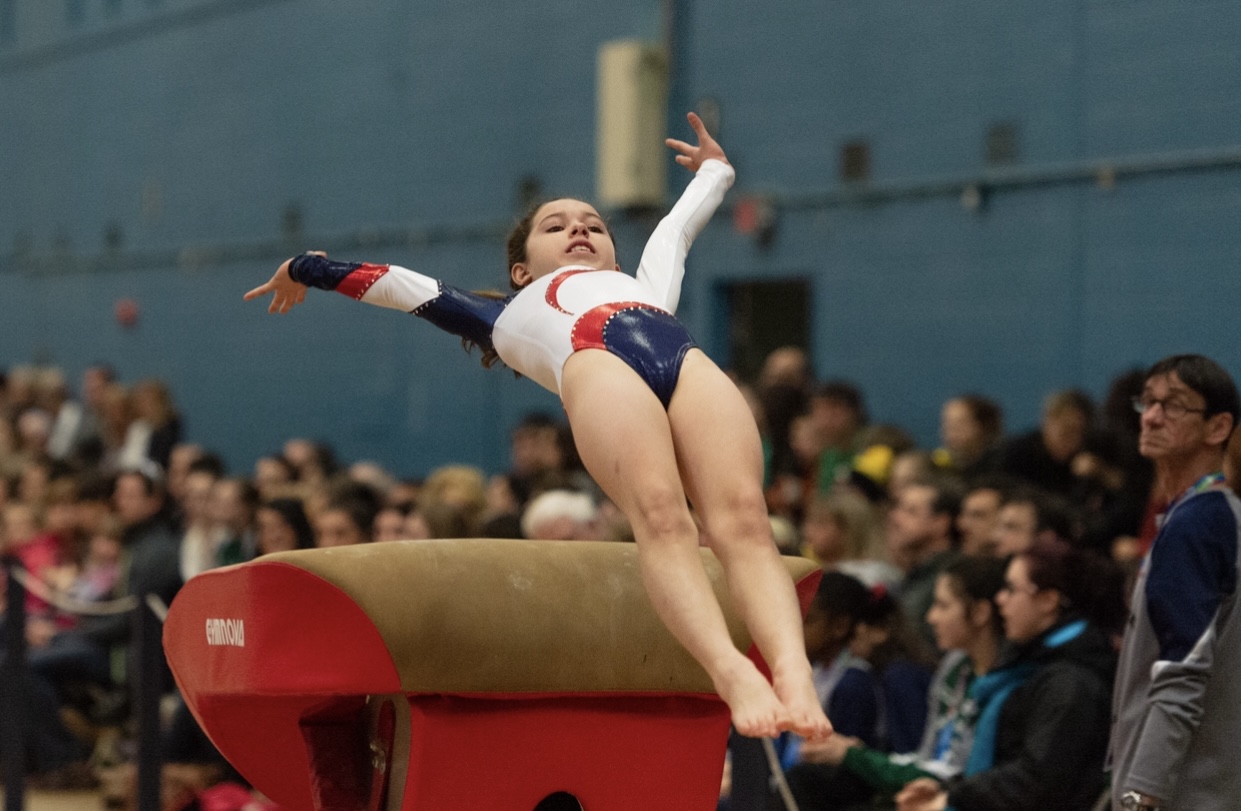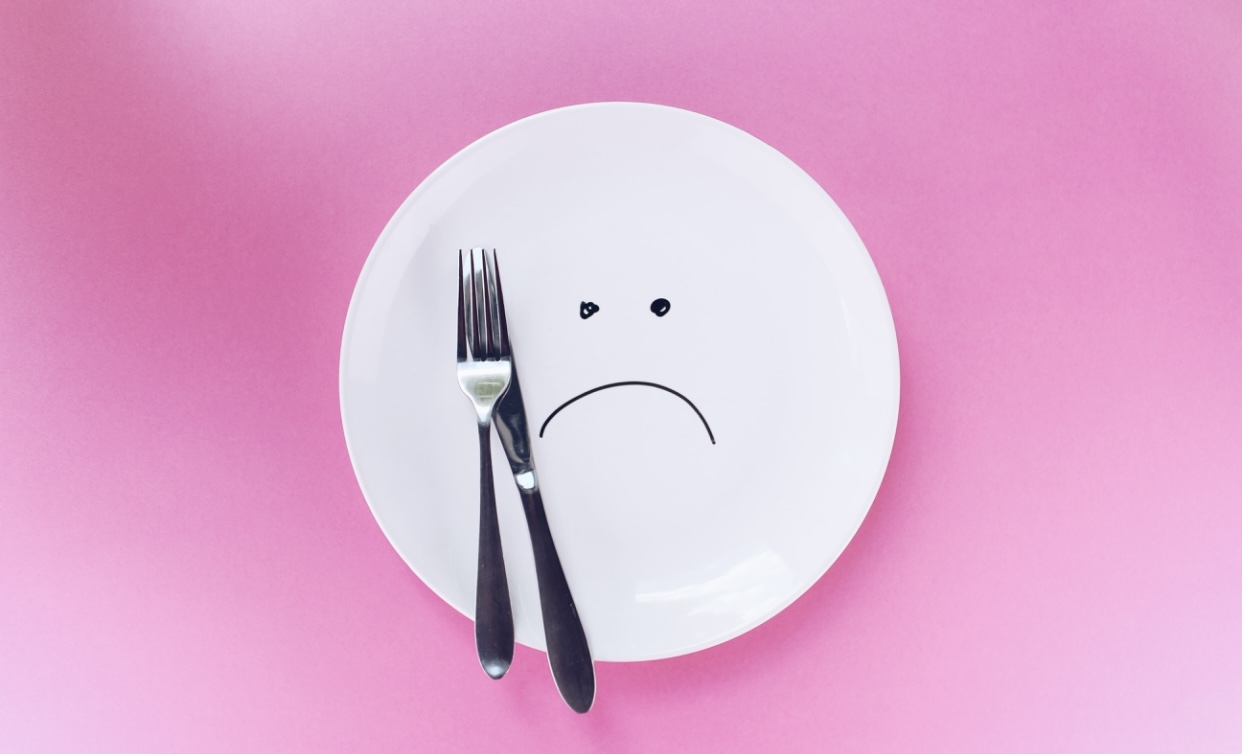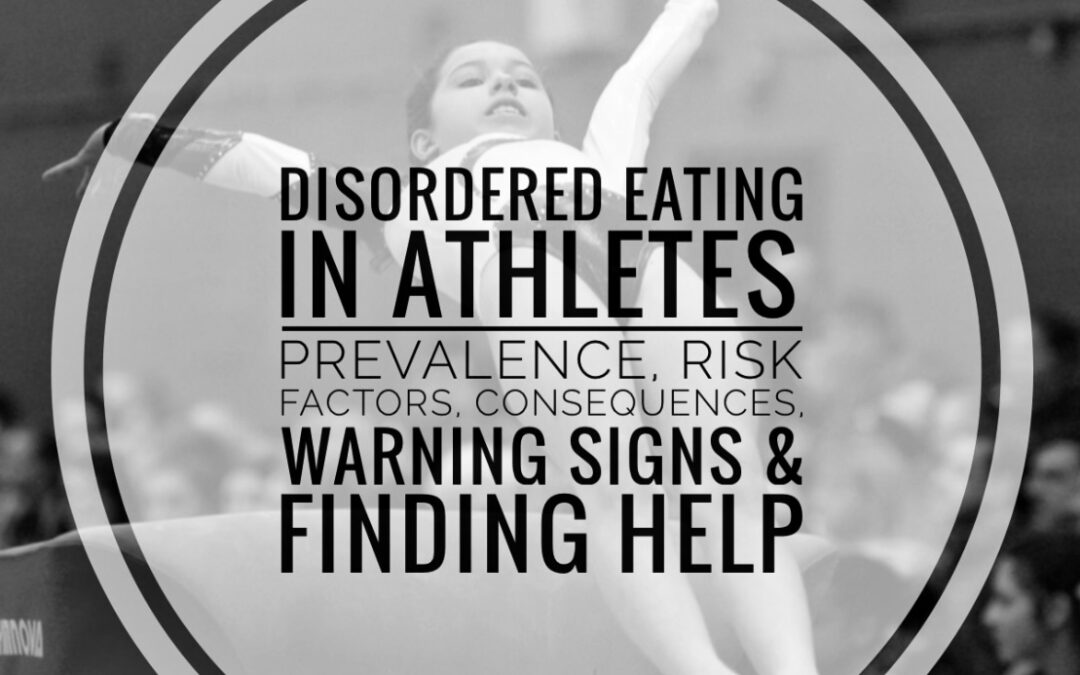
Each year around this time, eating disorder communities around the country rally together to promote and celebrate National Eating Disorder Awareness Week. The purpose is to educate the public about eating disorders and share how to support those that are recovering from them.
According to the National Eating Disorders Association, eating disorders have the 2nd highest mortality rate of all mental health disorders, surpassed only by opioid use disorder.
That’s a statistic I didn’t used to believe impacted my work as a sports dietitian. Boy, was I wrong.
Disordered eating is widespread among student athletes. And sadly, it’s on the rise. As a sports dietitian, I see first-hand the devasting impact it can have on teens and their families. If you know a student athlete, have a student athlete or work with student athletes, you need to know about disordered eating and eating disorders in sport.
What Is Disordered Eating
Disordered eating is the term used to describe a wide range of potentially harmful or disruptive eating patterns or behaviors. Fad dieting, skipping meals, intentional undereating or following an overly restrictive diet with the intent to lose weight or improve health are some examples of disordered eating. Not everyone that engages in those behaviors has an eating disorder. But when adolescents start altering their diet without proper instruction, it can have lasting impacts on their growth and development, and it can lead to a bigger problem – an eating disorder.
Is Disordered Eating The Same Thing As An Eating Disorder?
While the term disordered eating is often used describe an eating disorder, the two are not the same. Disordered eating is a generic term that describes an unhealthy eating pattern, while an eating disorder is a more serious mental health disorder. The most common eating disorders are anorexia nervosa (AN), bulimia nervosa (BN), binge eating disorder (BED), avoidant restrictive food intake disorder (ARFID), and other specified feeding and eating disorders (OSFED.) The Diagnostic and Statistical Manual of Mental Health Disorders, Fifth Edition (DSM-5) outlines specific criteria that must be met before a diagnosis can be made.
While the 5 listed above are the most common eating disorders, the list doesn’t end there. Although not officially recognized as eating disorders in the DSM-5, anorexia athletica, muscle dysmorphia, body dysmorphic disorder and orthorexia nervosa are all serious conditions that are associated with eating disorders.
How Common Are Eating Disorders in Athletes
Disordered eating in athletes often goes unreported, making it hard to determine just how prevalent it truly is. There are prevalence studies published, but because each study has their own population group, methods and criteria, it’s hard to determine the prevalence in the athletic population as a whole when looking at the data.

We do know that athletes participating in aesthetic sports, weight-class sports and sports that emphasize and encourage maintaining a lower body weight are especially at-risk. A somewhat recent (2020) review study published in the Journal of Eating Disorders looked at the prevalence of disordered eating in lean sports. Of the 7 studies included, 6 showed that athletes participating in lean sports had significantly higher rates of disordered eating than athletes participating in non-lean sports. Another study found that among female high school athletes in aesthetic sports, 42% reported disordered eating.
A 2023 study compared the body composition, eating habits and disordered eating behaviors of adolescent classical ballet dancers to their non-dancer, same sex peers. While no differences were observed between the two groups for eating habits or the EAT-26 scores, 1 out of 4 (23.3%) of the total participants were found to have disordered eating behaviors.
Studies show that athletes participating in non-lean sports also have high rates of disordered eating. And, it’s possible that the rate of disordered eating and eating disorders in young athletes may be similar to their adolescent non-athletics peers.
Covid-19 And Increased Rates of Adolescent Disordered Eating
Several studies have suggested a correlation between the COVID-19 pandemic and an increased rate of mental health disorders. In addition to increasing symptoms of depression and anxiety, there’s also been a pandemic-related surge in disordered eating. While the exact relationship between the two is still being investigated, researchers believe that increased stress, social isolation, difficult access to healthcare, societal changes in eating habits and the use of technology all play a role. The social restrictions due to Covid-19 also resulted in teenagers spending more time on social networks like Tik Tok and Instagram.

I’ve definitely seen the rise in my own practice. Before the pandemic started, my case load was split 60/40 between athletes seeking sports nutrition for performance or specific nutrient concern, and those with a disordered eating pattern. Today, more than 85% of my clients are struggling with the consequences of disordered eating and eating disorders.
Why Is Disordered Eating Common in Athletes?
Athletes face a lot of pressure to succeed. They’re often judged not only on how they perform, but also on how they look. The drive to improve or excel at their sport can lead to intentional changes in their eating and training.
While athletes do have added pressures from playing a sport, participation in athletics alone doesn’t result in disordered eating. It’s more complex than that. Genetics, the psychological traits of competitive athletes (like perfectionism and anxiety) and environmental factors (like weight stigma) combined with peer acceptance and the pressure to succeed at their sport all can play a role.

In addition to the biological, social and environmental factors, athletes also have higher energy needs to support their training and competitions. That means that unintentional decreases in food intake, or an increase in training without increasing their food intake to support it, can lead to problems.
How Does Disordered Eating Start?
All teenagers, not just athletes, socially strive to fit in and be accepted. A single comment about a teenager’s body size, shape, weight or food choices can leave them feeling insecure. Even an innocent comment made by a coach, parent or friend can lead a teen down the road of disordered eating. Weight bullying or a negative comment from a peer can be the beginning of it, too.
Disordered eating often starts off innocently, with good intensions. An athlete may change their diet to lose weight or build muscle because they believe it will improve their performance. Or, they stop eating certain foods believed to be “bad” or “harmful” for their health. Making diet changes to improve health might seem like a harmless goal. But, without proper guidance, it can be dangerous.
If their new eating habits result in weight loss, they may be happy with the results. Especially if they receive praise or compliments from others. That one diet change can quickly turn into two, then three, then more changes.

Initially, the diet and body composition changes may make an athlete feel and perform better. I’m often amazed at how well a driven athlete can perform without proper nourishment. But any performance benefits or feel-good emotions are short lived. After days and weeks of under-fueling, the body begins to show signs it’s in trouble. Health begins to weaken and sports performance begins to decline. The focus on their diet and body image can lead to obsessive thoughts, and other mental health disorders like anxiety and depression.
The Connection Between Social Media And Eating Disorders
Teenagers spend a lot of time on social media, and let me tell you – it’s a breeding ground for disordered eating and eating disorders.
While tuned in, teens can get bombarded with messages on dieting, restrictive eating and weight loss. In December, 2021, the Wall Street Journal published an article showing how Tik Tok inundates teens with eating disorder videos. It dug into the algorithm used to feed content to users, explaining how the more videos on restrictive eating a teen engages with, the more videos on the topic they are fed. Before long, their “for you” page is saturated with videos about dieting, body image, restrictive eating and more.

Exposure to these videos and messages day after day is enough to lead anyone down the path of disordered eating. The problem is, teens don’t recognize it as disordered because the eating disorder behaviors are normalized on social media. That’s why it’s so important for others to know the warning signs and where to get help.
What Are The Risk Factors Of An Athlete Developing An Eating Disorder?
As I mentioned above, there are a wide range of biological, psychological and sociocultural issues that can increase a person’s risk of developing an eating disorder. For athletes, the pressure to succeed in their sport combined with a culture that emphasizes body weight can increase their risk of disordered eating. Disordered eating patterns can then turn into an eating disorder. Other risk factors for athletes include:
- Not eating enough for the body to properly function. This can be intentional, by deliberately restricting food intake or over-exercising to burn off more calories. It can also be unintentional, like during a growth spurt, illness or intense athletic training.
- Participating in aesthetic sports that emphasize appearance such as gymnastics, diving, horseracing, figure skating, dancing and cheerleading.
- Participating in sports that have weight requirements such as rowing, Taekwondo, wrestling and boxing.
- Endurance sports such as track and field, running and cycling.
- Athletes that strongly believe that a lower body weight will improve sports performance.
- Being a perfectionist, especially in those that set unrealistically high goals for themselves.
- Having a low self-esteem and/or other mental health disorders like depression, anxiety or obsessive-compulsive disorder.
What Are The Consequences of Disordered Eating in Young Athletes?
Disordered eating in athletes can have negative consequences on both health and sports performance. Initially, an athlete may be able to perform at their normal level. Over time though, it begins to negatively affect their physical, physiological and mental health.
The Consequences of Disordered Eating on Sports Performance
Disordered eating and eating disorders can impair sports performance in the following ways:
- Dehydration, resulting in fatigue, nausea, headaches and impaired focus
- Inadequate carbohydrate intake resulting in early glycogen depletion and fatigue
- Inadequate protein intake or ineffective protein utilization resulting in muscle weakness and wasting
- Low energy availability resulting in poor bone health, fatigue and impaired mood
- Increased stress fractures due to poor bone mineral density
- Increased musculoskeletal injuries due to the inability to build and repair muscle tissue
The Consequences of Disordered Eating on Health, Growth & Development
The adolescent years are a time of significant growth and development. Bones are lengthening and hardening. Muscles are developing. The body begins producing reproductive hormones. All kids need extra nutrition during puberty to support these changes. Active kids need even more to support the energy expended from their activity or sport.
Disordered eating and eating disorders can negatively impact the health of any athlete, but restricting food intake during the adolescent years can have an especially profound effect on growth and development. The consequences can range from mild to severe, based on the severity and length of energy restriction. Weight loss, mood changes and loss of a menstrual period in females are some of the first signs of a problem. While those are all things you can see, there’s a lot more physiological changes happening inside of the body that can go unnoticed.
Food restriction and/or extreme exercising can lead to what’s known as low energy availability (LEA.) At this state, the body does not have enough energy left to support all physiological functions needed to maintain optimal health. Certain functions are forced to slow down or even stop so that others can continue. During extended periods of low energy availability, energy metabolism, reproductive function, bone health, immune function, protein synthesis, and cardiovascular health can all be compromised. Among adolescents, cardiovascular disturbances can appear in the early stages of anorexia and can have detrimental consequences.
In addition to the physiological complications, disordered eating and eating disorders also have devastating effects on mental health. Multiple studies have shown that depression is the most common co-occurring diagnosis for people with eating disorders. Anxiety is common, as well.

What Are The Signs An Athlete May Have Disordered Eating?
It’s important to understand that not all bizarre eating habits are classified as disordered eating. Avoiding certain foods because you don’t like the taste or the texture is normal. Some athletes choose to avoid certain foods because they don’t like the way they make them feel or they get nervous to eat on game day. Those athletes may just need to learn how and why to eat to support their performance. Other athletes, though, may have disordered eating or an eating disorder. It can be hard to tell the difference.
The following are some warning signs that an athlete may have disordered eating or an eating disorder.
- Weight loss
- Changes in eating behavior, especially skipping meals or cutting out foods that used to be enjoyed as part of their eating pattern.
- Frequent talk about food and body image, even if body weight isn’t mentioned
- Negative self-talk, especially about their own body
- Compulsive exercise patterns such as adding extra activity to “burn off” extra calories and being overly upset over missing a workout.
- Changes in social habits, especially skipping gatherings that involve food or eating out.
- Denial of food restriction, over exercising or an over focus on body image.
- In females, delayed puberty or menstrual irregularity
- Changes in mood, such as increased sadness, depression, anxiety or obsessive-compulsive behaviors.
Parents can open the door for conversation by sharing their concerns and by asking qustions. It can take a few discussions to get a teenager to open up and accept support, so keep the lines of communication open.
What To Do If You Suspect Disordered Eating
Identifying a disordered eating pattern early is important to prevent the progression to an eating disorder. If you suspect that a youth athlete isn’t eating right, don’t ignore it. Ask to speak to them in a private place where no one else can hear the conversation. Express your concerns and give the athlete time to open up and talk freely. Most importantly, don’t give up on the conversation because a child is denying a problem. Denial is common in the beginning.
Parents, coaches and peers play an important role in preventing and recognizing disordered eating. But, it’s not their job to fix it. Overcoming disordered eating or an eating disorder requires expert help. Once you recognize a problem, the next step is to find a treatment team to support the athlete. A doctor, therapist and a dietitian trained in working with adolescent athletes and disordered eating is key.
The National Eating Disorders Association has a screening tool to help determine if it’s time to seek professional help. They also have a helpline you can call for support, resources and more.


 Hi, I’m Heather – a registered dietitian, busy mom, consultant, adventure junkie and travel addict who has mastered living healthy on the go. My blog is where I share simple recipes and healthy living tips to help and inspire others to live their best life.
Hi, I’m Heather – a registered dietitian, busy mom, consultant, adventure junkie and travel addict who has mastered living healthy on the go. My blog is where I share simple recipes and healthy living tips to help and inspire others to live their best life.
Thank you for this article! As a current college cross country and track runner who has struggled in the past with some eating problems, I really enjoyed reading this article, and it was educational to understand the differences between eating disorders and disordered eating. I am going into the elementary teaching field next year, so this was very helpful for me to read especially as I will have students who may have some of these struggles especially with their athletics, so that I can know what to watch for.